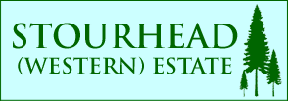Due to other committments I am not giving any quotes or taking orders for cladding or fresh sawn timber at the moment. Please make use of our advice pages, but look elsewhere for your timber.


 Home
Products
Timber Info
Activities
Lettings
About
Contact
Home
Products
Timber Info
Activities
Lettings
About
Contact

Cladding Design
Why Timber Cladding?
Timber may be the ultimate sustainable building material, but there need to be more reasons to explain its popularity as an external skin for buildings throughout history. Today the main reasons are:
- It looks fantastic
- It is one of the cheapest external wall options
- It requires minimal skill to install
- It needs no maintenance
Cladding to Suit Your Building
Whether cladding runs horizontally or vertically, and the width of the boards, make a huge difference to the look of a building. Vertical cladding will emphasise the height of a building, wider boards reduce the apparent size of a big blank wall. If there are lots of windows and doors, leaving small patches of cladding, it might be better to reduce the board width to make it look less "bitty". Try sketching some lines on elevation drawings of your building and see how it looks.
Green or Seasoned?
Unseasoned timber is cheaper, but generally is used as sawn boards. Shrinkage and movement as the timber dries can spoil the crisp lines of machined profiles, and cause problems such as tongue & groove separating. We only offer profiled timber from seasoned western red cedar.
Timber Species
We favour three naturally durable species: oak, western red cedar and larch.
Oak will last a lifetime, in fact lifetimes. It has a lovely mellow colour and a real sense of solidity. However green oak has relatively high shrinkage on drying, and the grain is not that straight. Although to a great extent it is held true by the fixings as it dries, there will be a waviness to the edges after drying. However, this gives it great character.
Western red cedar is very stable and durable, suitable for all sorts of profiles. Home grown Western red cedar is very consistent warm honey colour. Knots are small (<20mm diameter) and never fall out. Green (unseasoned) cedar will shrink slightly in its length. Where it is used horizontally on wide walls with joins between boards, unsightly gaps can form at the board ends (up 10 mm at worst). For this type of application seasoned cedar is recommended.
Larch is more orangey in colour when fresh, and weathers to a silver/grey. The grain is a bit coarser than cedar, and it will have some dead knots (<35mm diameter).
Treatment & Maintenance
None required! All these timbers will weather to silvery grey with time. The time taken is dependent mainly on the amount of UV light that the boards receive, and to a lesser extent the amount of exposure to rain. A south facing wall may weather in one year, a north facing one three years.
I used to say that there is no way to keep that fresh timber look. However Osmo UV Oil is a clear products which greatly slows down the fading effect. It may not last for ever, but if re-applied every few years it does seem to do a very good job. Beware, it is expensive. Pigmented stains and finishes shield the wood from UV light even better, but you have got to like the colour!